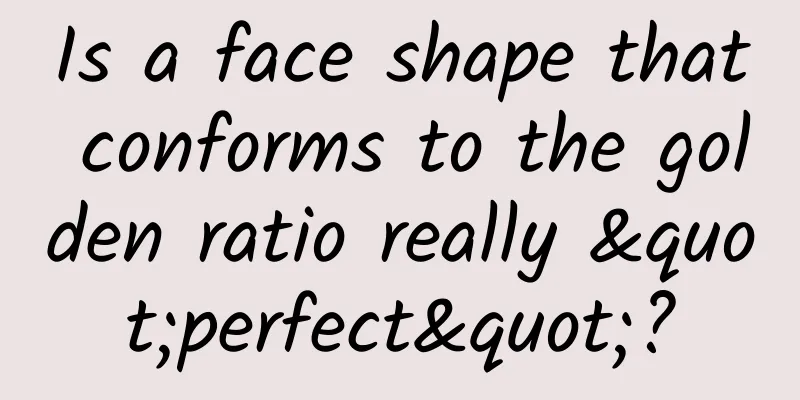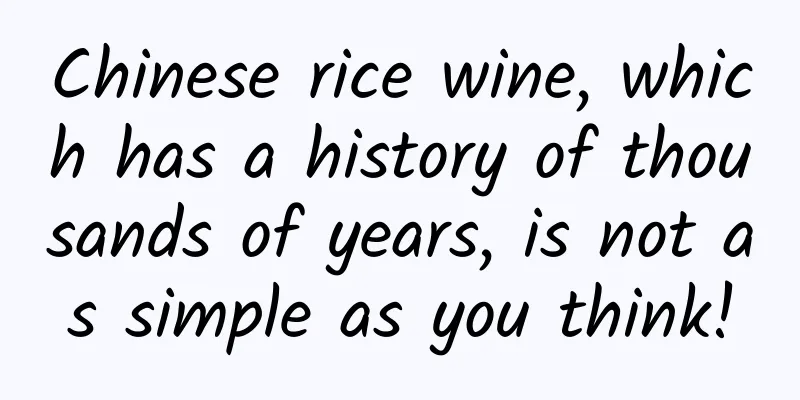Is a face shape that conforms to the golden ratio really "perfect"?

|
If you want to select the most beautiful face in the world, which aspects do you usually consider, nose, eyes or mouth? In the eyes of most plastic surgeons, judging whether a person's face is good-looking requires a "golden ratio test", that is, to evaluate a person's facial beauty based on how close a person's facial proportions are to the golden ratio. However, can this ratio really represent beauty? Amber Heard About 2,400 years ago, the Pythagorean school first discovered the golden ratio. In the fourth century BC, the ancient Greek mathematician Eudoxus was the first to systematically study this problem and establish a theory of proportion. Based on Eudoxus's research, Euclid of Alexandria further discussed the golden ratio and defined the ratio obtained from the division of a line as the "golden ratio", which became the earliest treatise recording the golden ratio. Simply put, you imagine a line that you want to divide into two parts. If you divide it as shown in the figure above, with point C as the dividing point, then the ratio of AC to CB will be equal to the ratio of AB to AC. This ratio can be obtained through a little simple mathematical operation. That is, the ratio of AC to CB is equal to the irrational number 1.618, which is exactly half the sum of the square roots of 1 and 5. In the centuries after Euclid's definition, more and more mathematicians became fascinated by this ratio and discovered more natural phenomena and laws related to the golden ratio, such as the famous Fibonacci sequence (1, 1, 2, 3, 5, 8, 13, 21, 34...). As the numbers become larger, the ratio between the previous number and the next number becomes closer and closer to φ (13/8 = 1.625, 21/13 = 1.615, 34/21 = 1.619, etc.). Fibonacci numbers in sunflowers Who would have thought that the golden ratio can be seen in the arrangement of leaves and seeds of plants, the structure of some crystals, and even the beautiful spirals in the spiral arms of some galaxies. This seemingly ordinary line seems to be an extension of the world-weaving line in God's hand, connecting one field after another. From ancient art to the 'perfect mask' Influenced by the Pythagorean school and its appreciation of the beauty of mathematics, the Greek philosopher Plato proposed that the physical world is a perfect projection of the "real" world, and that some truths or ideals can only be glimpsed in the physical world through logical reasoning, or by creating a perfectly symmetrical order. This had a great impact on subsequent Western culture, and most hypotheses or laws, including those in natural science, were aesthetically pleasing. By the mid-17th century, German mathematician Adolph Zeising had published a book claiming that all the most beautiful and fundamental proportions in the world were related to the golden ratio, which led to a popular saying at the time that the art and architecture of ancient Greece looked so beautiful because they all had the golden ratio. In 2017, the Parthenon in Athens was named one of the most beautiful buildings in the world, and it was said to conform to the golden ratio. But this is not the case. An article in the Cambridge Archaeological Journal conducted an in-depth study of 15 temples, 18 monumental tombs, 8 sarcophagi and 58 tombstones from the 5th century BC to the 2nd century AD in ancient Greece, and found that the golden ratio did not exist at all in ancient Greek architecture in the 5th century BC, and was rarely used in the 3rd century BC and the 2nd century AD. In fact, except for mathematics and numerology, the golden ratio basically did not exist in other disciplines in ancient Greece. However, this does not affect the "sacredness" of the golden ratio. To this day, the golden ratio is regarded as the best choice in nature, art, music, architecture and even the human body because of its so-called visual beauty. The person who applied the golden ratio to the human face was a cosmetic surgeon named Stephen R. Marquardt. In 2002, he claimed to have discovered that the golden ratio can determine whether a person's facial proportions are beautiful, and that the most beautiful face is when the ratio of the width of the nose to the width of the lips is 0.618. Later, Marquardt created a mask representing "perfection" for the plastic surgery community, also known as the Marquardt mask, and the golden ratio became a benchmark in the field of plastic surgery. When you put on the Marquardt mask, you are perfect. So where did this mask come from? See watermark for source In order to study the "more attractive" faces, Marquardt collected a large number of facial proportions of movie actors and models. This study of "precise" people led to the creation of the Marquard Mask. But it is obvious that the results obtained in this way are very one-sided. Later studies have shown that the Marquardt mask only represents the facial features of a few masculine northwestern European women. To put it bluntly, it is the "sense of sophistication" often mentioned in fashion models. There is no reference value for people in South Africa, South Asia, and East Asia, but researchers have identified some "Platonic" features of facial beauty, such as symmetry, averageness, sexual dimorphism, skin texture, and unknown variables... However, there is currently no evidence that the golden ratio φ determines facial beauty, nor is there any single number that universally represents beauty. References: https://plus.maths.org/content/myths-maths-golden-ratio https://doi.org/10.1017/S0959774314000201 https://pubmed.ncbi.nlm.nih.gov/18175168/ |
<<: Are you kidding?! Is this a child safety seat?
>>: Does a child learn bad things when he lies? In fact, lying is not something you can learn.
Recommend
Chinese people are the fastest growing people in the world! Have you contributed?
Earlier, the world-renowned medical journal "...
The efficacy of chicken stewed with stinky peony root
The root of stinking peony is a herbal Chinese me...
Understand at a glance | How much do you know about the application of nuclear technology around us?
...
How to use Polygonum multiflorum to wash white hair
In our daily life today, due to the great work pr...
The efficacy and function of banana head
Traditional Chinese medicine has a history of tho...
"Temperature-controlling outerwear" and "intelligent administrator"... revealing the "black technology" that escorts Shenzhou XIV
The Shenzhou 14 astronaut crew successfully enter...
The efficacy and function of yellow wormwood
Xihuangcao is a common Chinese medicinal material...
The efficacy of American ginseng and Ophiopogon japonicus soaked in water
Eating more American ginseng is beneficial to us ...
Can we create new substances by artificially changing the number of protons in the nucleus?
This article is based on answering similar questi...
What is the medicinal value of blue sheep?
The blue sheep is a kind of sheep between wild go...
Will overeating delicious food make your liver become as sticky as dough?
Recently, Nature magazine published a very unique...
Effects and functions of Coptis chinensis
Coptis chinensis is a common Chinese patent medic...
The effects and functions of wild clove root
The efficacy and function of the traditional Chin...
The difference between Fritillaria cirrhosa and Fritillaria cirrhosa
People have more or less unfairness in their live...
World Food Safety Day | Get these tips to help you stay away from foodborne diseases
June 7 World Food Safety Day Stay away from foodb...









